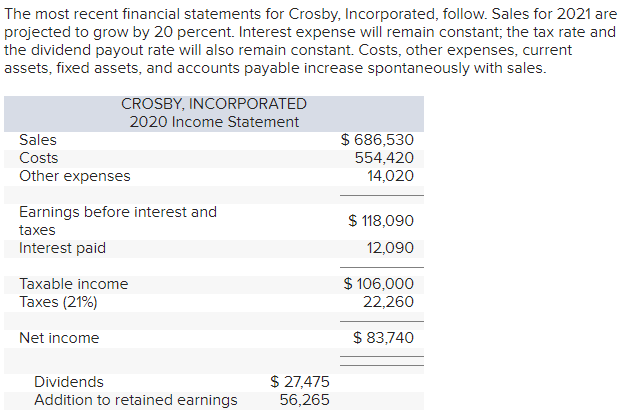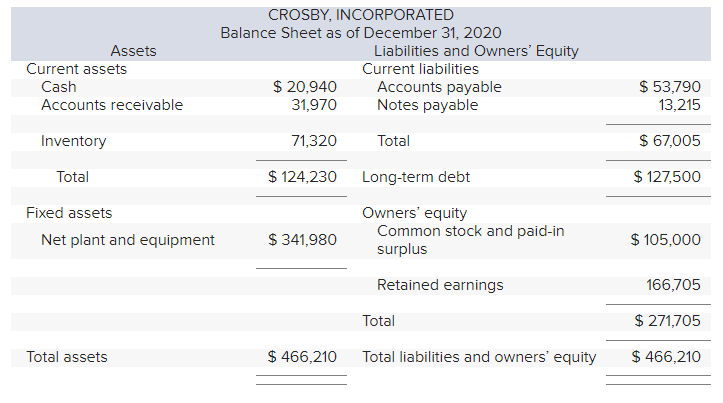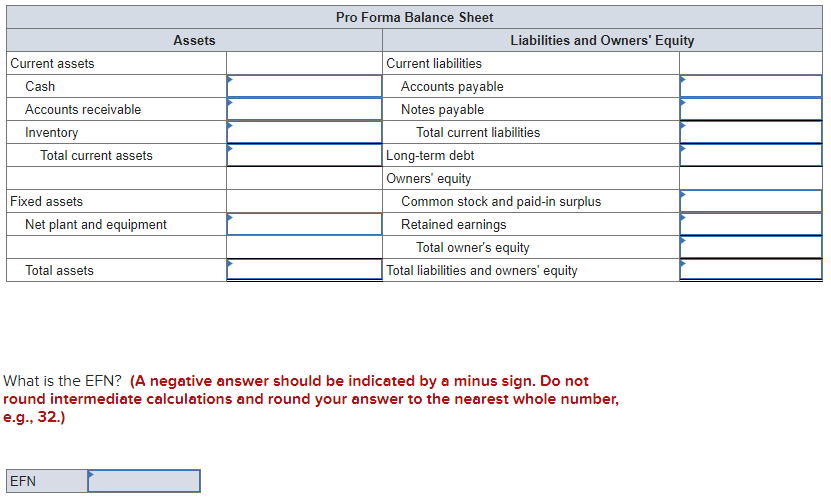



The most recent financial statements for Crosby, Incorporated, follow. Sales for 2021 are projected to grow by 20 percent. Interest expense will remain constant; the tax rate and the dividend payout rate will also remain constant. Costs, other expenses, current assets, fixed assets, and accounts payable increase spontaneously with sales. CROSBY, INCORPORATED 2020 Income Statement Sales $ 686,530 Costs 554,420 Other expenses 14,020 Earnings before interest and $ 118,090 taxes Interest paid 12,090 Taxable income $ 106,000 Taxes (21%) 22,260 Net income $ 83,740 Dividends Addition to retained earnings $ 27,475 56,265 Assets Current assets Cash Accounts receivable CROSBY, INCORPORATED Balance Sheet as of December 31, 2020 Liabilities and Owners' Equity Current liabilities $ 20,940 Accounts payable 31,970 Notes payable $ 53,790 13,215 Inventory 71,320 Total $ 67,005 Total $ 124,230 Long-term debt $ 127,500 Fixed assets Net plant and equipment $ 341,980 Owners' equity Common stock and paid-in surplus $ 105,000 Retained earnings 166,705 Total $ 271,705 Total assets $ 466,210 Total liabilities and owners' equity $ 466,210 In 2020, the firm operated at 80 percent of capacity. Construct the pro forma income statement and balance sheet for the company. Assume that the company cannot sell fixed assets. This implies that asset utilization may remain less than 100 percent next year as well. (Do not round intermediate calculations and round your answers to the nearest whole number, e.g., 32.) Pro Forma Income Statement Sales Costs Other expenses EBIT Interest Taxable income Taxes Net income Assets Current assets Cash Accounts receivable Inventory Total current assets Pro Forma Balance Sheet Liabilities and Owners' Equity Current liabilities Accounts payable Notes payable Total current liabilities Long-term debt Owners' equity Common stock and paid-in surplus Retained earnings Total owner's equity Total liabilities and owners' equity Fixed assets Net plant and equipment Total assets What is the EFN? (A negative answer should be indicated by a minus sign. Do not round intermediate calculations and round your answer to the nearest whole number, e.g., 32.) EFN










